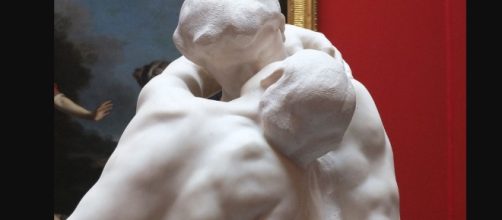A world of hurt and other matters of the heart form the theme of a new show at the Acropolis in Athens called “The Art of Emotions – Emotions in Art.” And while these hearts beat between 700 B.C. and 200 A .D. the theme is relatively new. Art exhibits are usually organized around style or century or country - not feelings. Athens’ display of 125 sculptures, vase paintings, and other artifacts demonstrates that people don’t change when calendar or country does. So what you get here is visual history of the unseen – our sensibilities.
Say it with feeling
The idea for an emotion-themed show was tried in 1996 at the High Museum in Atlanta and it didn’t go over too well with critics. It was the occasion of the Olympics celebrated in that city and the exhibit titled “Rings: Five Passions in World Art” referenced the Olympic symbol that stands for a joining of lands. The “passions” featured were love, anguish, awe, triumph, joy. And like the Athens show, Atlanta’s was arranged according to states of mind.
From the heart
So, for example, you got Rodin's marble sculpture “The Kiss” presented with a 2,000-year old ceramic from Mexico titled "Amorous Couple.” And by their example, the human heart could not only be seen as the great equalizer, but art about the heart was, too.
Both works held the same intensity of an ardent embrace. In fact, the polished surfaces of each seem to bear a sheen of sweat from their fervor. Art world superstars in this show had no patent on truth and beauty.
Moment of truth
The Acropolis show promises that same fervor. The marble head of the Amazon warrior-queen Penthesilea suggests that promise. The mythical queen fought Achilles in the Trojan War and was mowed down by him, and in her dying moments, their eyes met and they fell in love. The feeling that her head conveys is being overcome both by her sudden discovery of love and the awareness that her life was ebbing. The art of the ancients may have been based on myths, but it was the stuff of genuine life.
In error
All of which makes it hard to understand why critics panned “Rings: Five Passions in World Art.” Exhibit director, J. Carter Brown, who once ran the National Gallery of Art in Washington, D.C., took a lot of brickbats from critics who complained that his exhibit idea reduced art too far and mocked it “Carter’s five-ring circus.” Art News magazine director Eric Gibson said that Brown’s idea put at risk the works shipped to Atlanta from museums worldwide for nothing. I witnessed the Atlanta show and if it’s even half as moving, it’ll be worth all efforts. As Brown explained it to me, he sought to help exhibit goers to “get it” – art, that is. By presenting painting and sculpture in terms of the emotions they convey, he made them easier to grasp. Here’s hoping the Athens show about emotions in art escapes brickbats this time.


